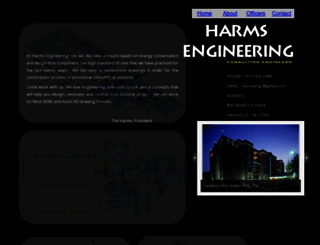Harms Engineering, Inc.: Professional Consulting Engineering
Page Load Speed
1.2 sec in total
First Response
28 ms
Resources Loaded
1 sec
Page Rendered
184 ms

About Website
Click here to check amazing Harms Engineering content. Otherwise, check out these important facts you probably never knew about harmsengineering.net
Tim Harms, Nashville TN, Harms Engineering, Mechanical, HVAC, Plumbing Fire, Protection, Professional Engineer, harmsengineering.net
Visit harmsengineering.netKey Findings
We analyzed Harmsengineering.net page load time and found that the first response time was 28 ms and then it took 1.2 sec to load all DOM resources and completely render a web page. This is quite a good result, as only 25% of websites can load faster.